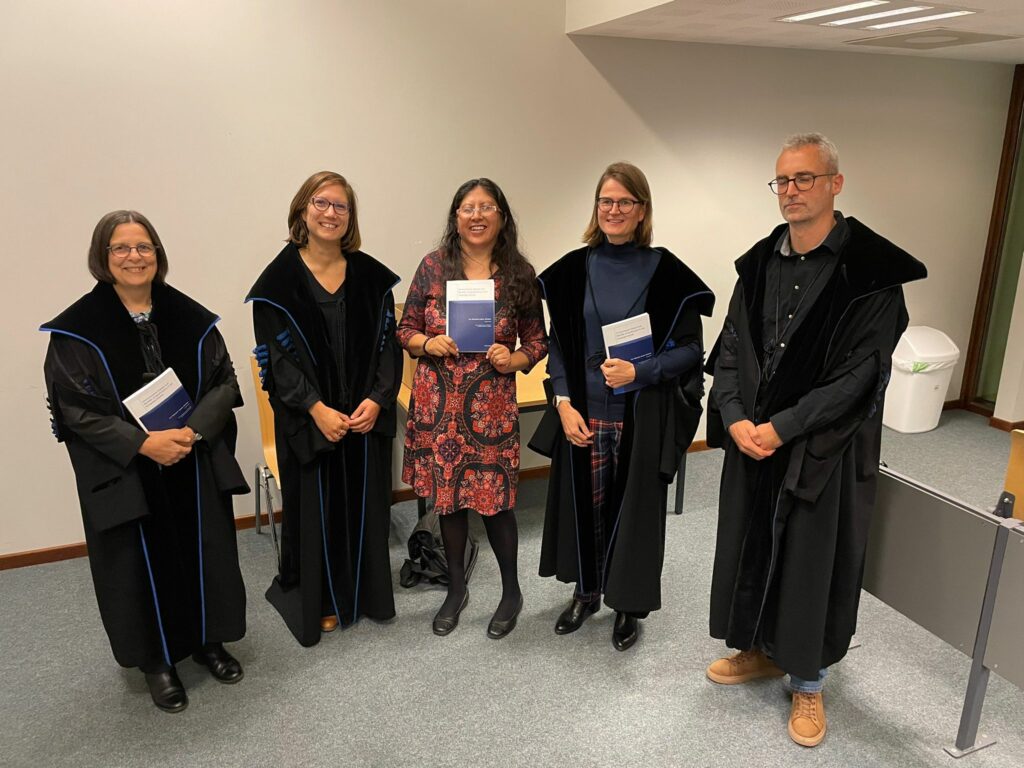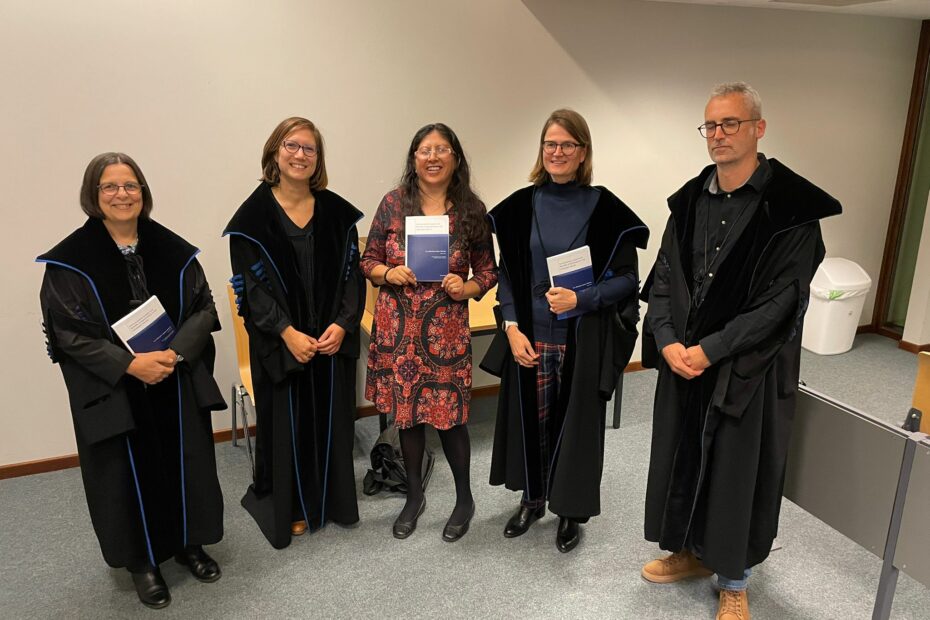On October 19 2023, Ilia Alomia publicly defended her PhD thesis entitled: “Environmental Impacts and Benefits of Agroforestry in the Galapagos Islands”.

Summary
Islands are particularly vulnerable to global change due to their limited size and remoteness. Sustainable land use practices based on nature-based solutions can help local communities to adapt their agricultural systems to climate change. This doctoral thesis research focused on Santa Cruz Island located in the Galapagos Archipelago-. About 72% of its continental surface area is nowadays protected. On the island’s windward side, the non-protected area was originally designated for the development of a self-sufficient rural community After characterising the land use dynamics over the last 60 years, this study analysed the potential impacts and benefits of agroforestry management practices on physical and hydraulic soil properties, and soil nutrient stocks . An intensive monitoring programme was implemented in 2019 to monitor hydrometeorology, soil moisture and temperature, and essential soil hydrophysical and biogeochemical properties, including soil nutrients.
Land use changed drastically in the central part of the island. While 94% of the non-protected area was still covered by native vegetation in 1961, the agricultural expansion converted the forests to an anthropogenic landscape having only 7% forest, 67% agricultural land and 26% invasive species. While the early settlements were large, isolated farmsteads, the average size of the farms decreased over time as the number of farms doubled. Over the last two decades, the rapid rise of tourism activities alleviated pressure on natural resources and led to the abandonment of agricultural land.
The agroforestry management practices have a significant effect on soil temperature, moisture availability, and nutrient contents. When forest vegetation protects the soil from direct solar radiation, the soil is about 12% cooler than in soils that were converted to agricultural land. Soil moisture is, on average, 20% higher under forest than under traditional agroforestry or abandoned farmland, and forest soils have a lower bulk density, lower saturated hydraulic conductivity, higher soil organic stocks and higher water retention capacity. The loss of soil organic carbon in agricultural sites is related to soil mixing due to tillage, which increases soil pore connectivity and facilitates the decomposition of soil organic carbon and leaching of base cations. At the same time, fertilization with organic manure and nitrogen-phosphorus-potassium changed the soil pH and enhanced soil nutrient leaching.
The present work illustrates how soil fertility, access to markets, and alternative incomes play an important role in land use decision making. Preserving forest remnants in an agricultural landscape has measurable effects with a reduction of soil warming by 12 %, a reduction of soil drying by 20%, and better preservation of soil organic carbon stocks compared to traditional agroforestry. Future land policy needs to account for the diversity in livelihoods in the rural communities, and the impacts and benefits of agroforestry management practices on soil and environmental health
